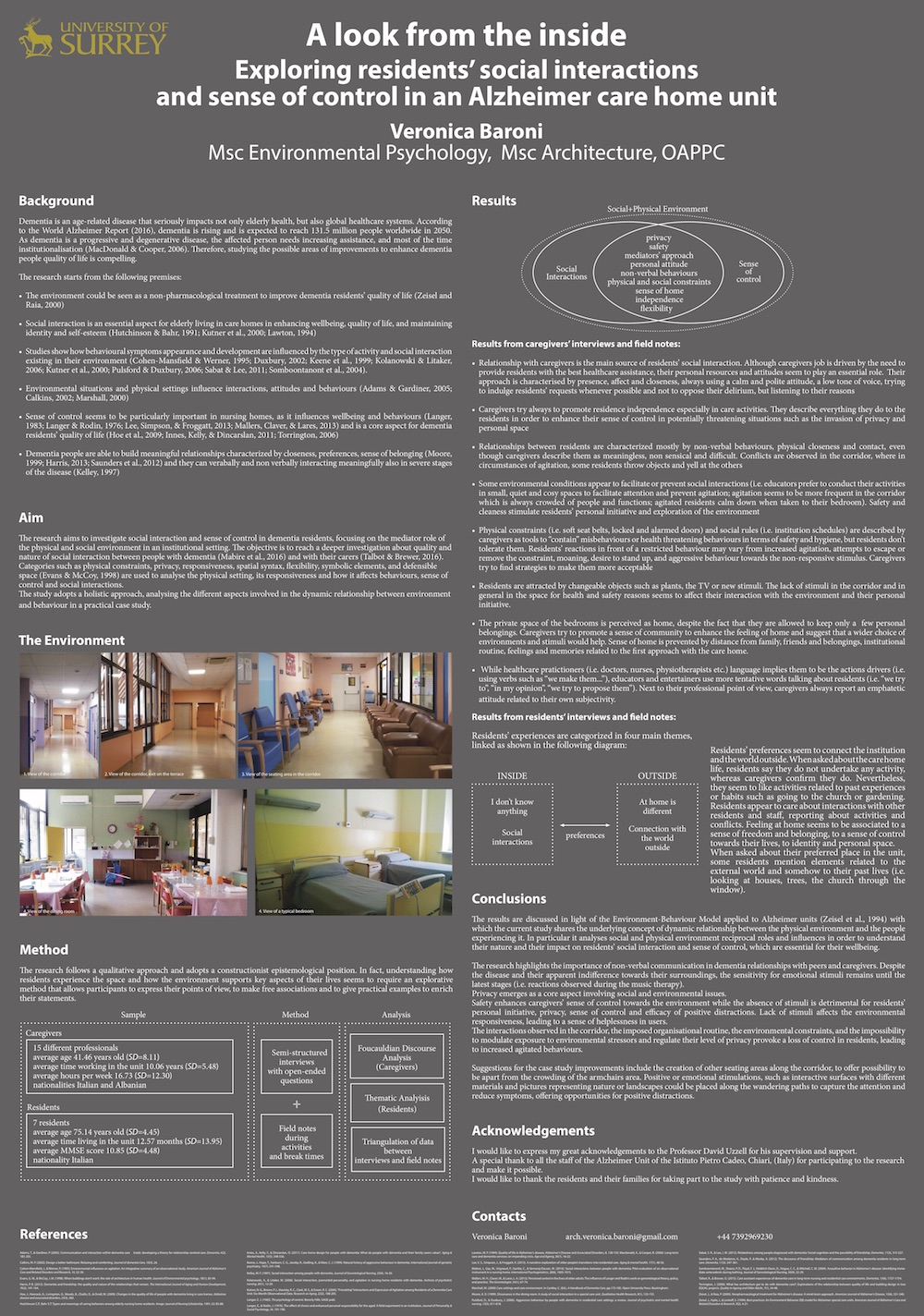Senior care / Behavioural change
European Healthcare Design 2018
A look from the inside
By Veronica Baroni | 08 Jun 2018 | 0
This study tries to answer the following research question: how do the social environment and physical setting support residents’ social interactions and sense of control in an Alzheimer care home unit?
Abstract
A look from the inside
This study tries to answer the following research question: how do the social environment and physical setting support residents’ social interactions and sense of control in an Alzheimer care home unit?
Qualities and dimensions of social interactions and sense of control are investigated, recurring to a qualitative approach based on semi-structured interviews involving caregivers and residents, and supported by field notes. Social interactions and control are explored and analysed in light of the physical environment mediator role.
The aim is to understand the dynamics of interactions between the physical and social environment, and residents’ behaviours in an institutional environment, used as a case study.
Based on the idea that the physical setting can influence care services and medical treatments affecting perceptions and behaviours, the analysis highlights the critical issues in reciprocal relationship of person behaviour and environment.
The research reveals the caregivers’ core role in encouraging and supporting social interactions, which are mostly characterised by physical contact and closeness. Small group activities in quiet environments seem to facilitate interactions, while crowding, noise and lack of privacy regulation generally provoke loss of control and prevent serene reciprocal communication. Although the level of cognitive impairment appears to affect independence and personal initiative, carers’ stimulation and setting conditions play a crucial role. Privacy regulation emerges as an essential aspect in balancing agitation and aggression, as well as the possibility to modulate exposure to environmental stressors and constraints. Safety is a main issue and objective for caregivers and architects. However, it leads to design settings that minimise stimuli, which is detrimental for environmental responsiveness, sense of home, personal initiative, and sense of control, as observed in the field.
The study analyses the nature of the relationships between physical and social environment and behaviours, offering a practical exemplification of the dimensions explored in the Environment-Behaviour Model for Alzheimer units (Zeisel et al, 1994). Generally, it provides a further understanding of dynamics occurring between patients and a specialised institutional setting. Based on the findings, practical recommendations are provided to improve the case-study setting. The study also supports the importance of a person-centred approach for better interactions and interventions.
Finally, the research shows the importance of a multidisciplinary approach that links contributions from psychology, design and architecture.

